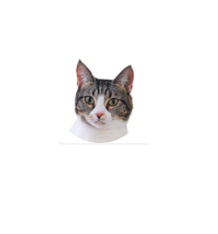Osteoarthritis, or arthritis in cats, is a common condition that causes painful joints and makes movement for cats uncomfortable. The condition has no cure, but the cat owner can take steps to make the cat feel better.
Indeed, a diagnosis of osteoarthritis in your cat can feel devastating and even overwhelming. That is because osteoarthritis is a progressive and degenerative disease that gets worse over time.
It is estimated that 90% of cats aged 12 years and older are affected by osteoarthritis. This makes the disease one of the most common chronic diseases affecting cats.
As a cat owner, while it may be difficult to come to terms with the fact that your cat has osteoarthritis, it is important that you understand the need to focus on the management of the condition rather than pursue curative approaches.
That is why it is advisable that if you notice your cat slowing down or showing signs of pain when it moves, you should schedule an appointment with your veterinarian right away. It is noteworthy to keep in mind that you will be successful in helping your cat through its osteoarthritis condition by maximizing the feline’s comfort and function and minimizing its pain.
What are the causes of arthritis in cats?
Arthritis in cats is caused by a number of factors. These include wear and tear as the cat’s joints weaken due to the pet’s age, abnormalities such as abnormal hip development that affects the cartilage around the cat’s joints, leading to cat hip pain, and injury caused by incidences of joint fracture, obesity, or genetics.
Symptoms of arthritis in cats
Your cat’s bones normally slide past each other easily and are protected by healthy joint fluid and cartilage. When the cat has arthritis, the smooth surface around the joints is worn down, and the bones grind against each other like sandpaper, which causes cat joint pain.
You’ll know your cat has arthritis if it exhibits symptoms including reluctance or hesitance to jump up or down, difficulty going up or down stairs, limping, stiffness in the legs, difficulty using the litter box, irritability, reduced levels of activity, less time spent on grooming, reduced height when jumping, and hiding or sleeping more than normal.
There are a number of options to consider for arthritis relief for cats. These include the use of non-steroidal anti-inflammatory drugs (NSAIDs), pain management medications, injectable joint protectants, acupuncture, cold laser therapy or photobiomodulation (PBMT), and cat arthritis supplements.
NSAIDs are the most common form of arthritis relief for cats. They are usually prescribed by a licensed veterinarian, who can help determine the type and duration of NSAIDs to be administered.
Pain management medication can be given to the cat to relieve joint pain in situations where NSAIDs are not appropriate or sufficient. In addition to pain relievers, cats with arthritis may benefit from injectable joint protectants. These involve a veterinarian giving the cat injections of glycosaminoglycans every four weeks or so.
Providing acupuncture could also help cats with arthritis. Acupuncture is an old healing practice in Chinese medicine where needles are placed at specific points in the body to relieve pain. If your cat is experiencing arthritis-related hip pain, acupuncture could provide much-needed relief.
PBMT is a noninvasive and painless treatment that allows a veterinarian to move a small device that emits therapeutic light waves across a cat’s body on top of the fur. The treatment significantly eases pain, decreases joint and hip pain, and decreases inflammation.
Cat arthritis supplements can be a great drug-free way to help you in the management of cat arthritis pain. Some of the best cat arthritis supplements include Antinol for Cats, Cosequin for Cats, and ArthriEase-Gold.
Help reduce the chances of your cat developing arthritis
While it is important to strive toward relieving pain for your arthritic cat, it is also advisable to help reduce the chance of your cat developing arthritis. You could do this by keeping the cat’s weight under control, feeding the cat a life-stage diet, and keeping the feline active and healthy with regular playtime.






Comments